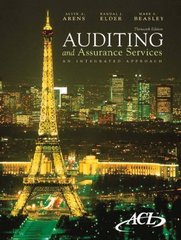
Mr. Davis' explanation was that your two alternatives are: 1. The state's defined benefit plan and 2. A defined contribution plan under which the university will contribute each year an amount equal to 8% of your salary. The defined benefit plan will provide annual retirement benefits determined by the following formula: 1.5% x years of service x salary at retirement. "It's a good thing I studied pensions in my accounting program," you tell him. "Now let's see. You say the state is currently assuming our salaries will rise about 3% a year, and the interest rate they use in their calculations is 6%? And, for someone my age, you say they assume I'll retire after 40 years and draw retirement pay for 20 years. I'll do some research and get back to you Required 1. You were hired at the beginning of 2018 at a salary of $100,000. If you choose the state's defined benefit plan and projections hold true, what will be your annual retirement pay? What is the present value of your retirement annuity as of the anticipated retirement date (end of 2057)? 2. Suppose instead you choose the defined contribution plan. Assuming that the rate of increase in salary is the same as the state assumes and that the rate of return on your retirement plan assets will be 6% compounded annually, what will be the future value of your plan assets as of the anticipated retirement date (end of 2057)? 3. Base on this numerical comparison, which plan would you choose? What other factors might you possibly also consider in making the choice? Mr. Davis' explanation was that your two alternatives are: 1. The state's defined benefit plan and 2. A defined contribution plan under which the university will contribute each year an amount equal to 8% of your salary. The defined benefit plan will provide annual retirement benefits determined by the following formula: 1.5% x years of service x salary at retirement. "It's a good thing I studied pensions in my accounting program," you tell him. "Now let's see. You say the state is currently assuming our salaries will rise about 3% a year, and the interest rate they use in their calculations is 6%? And, for someone my age, you say they assume I'll retire after 40 years and draw retirement pay for 20 years. I'll do some research and get back to you Required 1. You were hired at the beginning of 2018 at a salary of $100,000. If you choose the state's defined benefit plan and projections hold true, what will be your annual retirement pay? What is the present value of your retirement annuity as of the anticipated retirement date (end of 2057)? 2. Suppose instead you choose the defined contribution plan. Assuming that the rate of increase in salary is the same as the state assumes and that the rate of return on your retirement plan assets will be 6% compounded annually, what will be the future value of your plan assets as of the anticipated retirement date (end of 2057)? 3. Base on this numerical comparison, which plan would you choose? What other factors might you possibly also consider in making the choice







